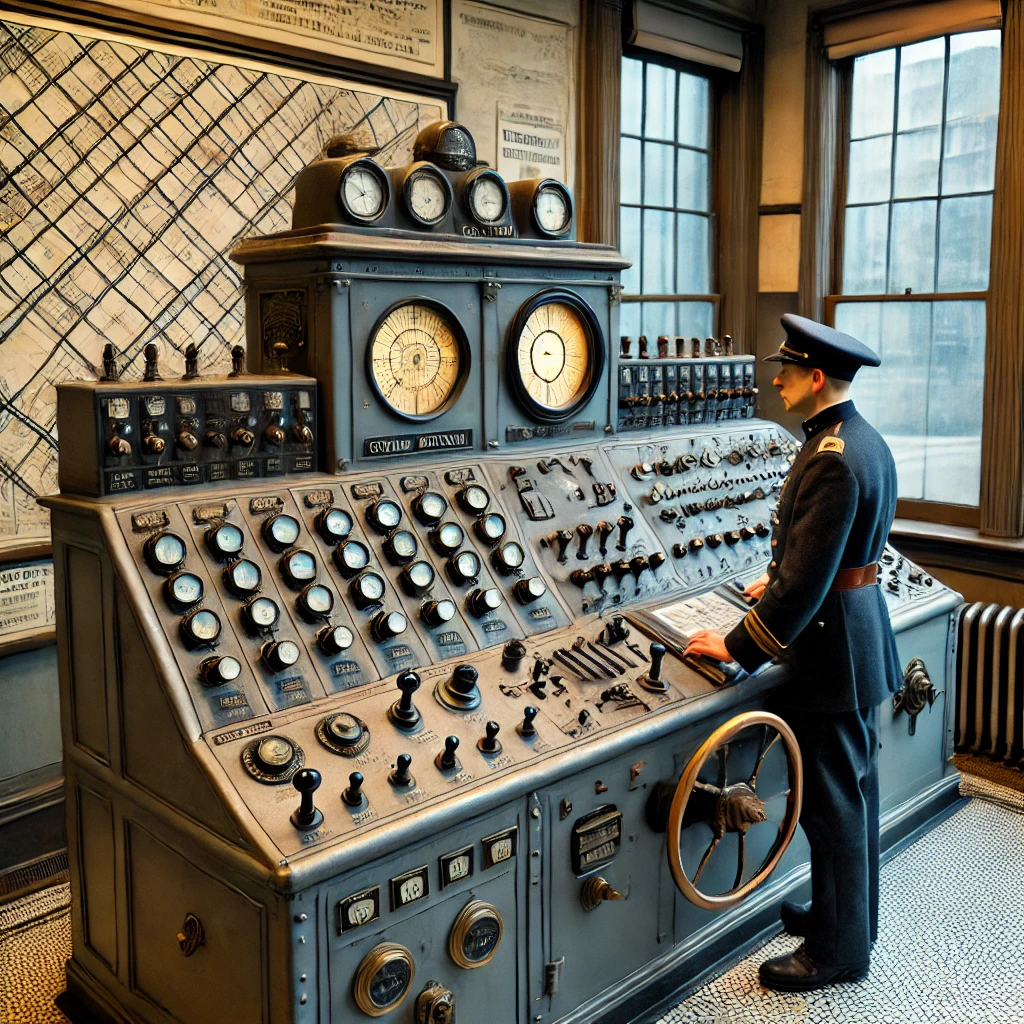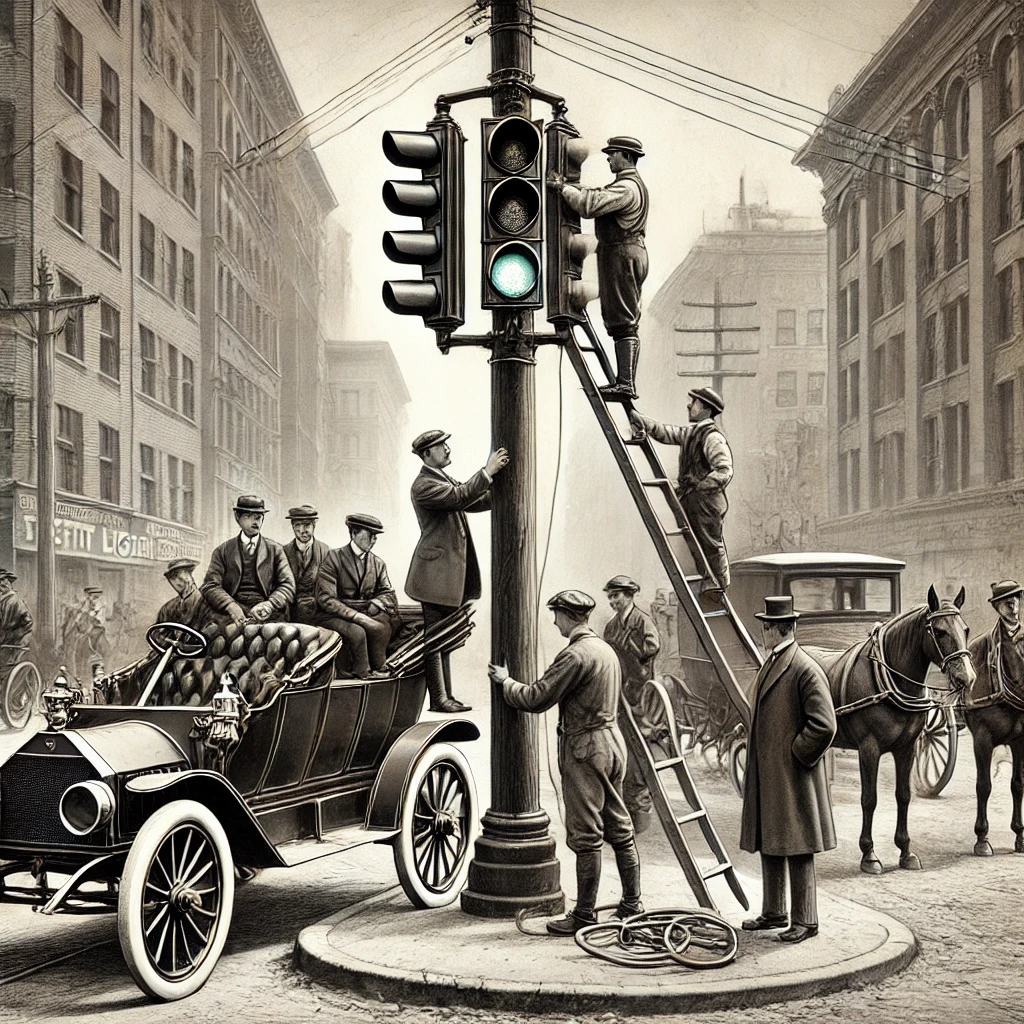On August 5, 1914, the first electric traffic signal was installed in Cleveland, Ohio, marking a significant advancement in urban traffic management. This groundbreaking innovation, designed by inventor James Hoge, was introduced at the intersection of Euclid Avenue and 105th Street. The installation of this traffic signal represented a pivotal moment in the evolution of road safety and traffic control.
Prior to the electric traffic signal, intersections were managed by manual traffic direction, including police officers and various forms of mechanical signals. The introduction of the electric signal marked a shift towards more automated and efficient traffic management systems, improving the flow of vehicles and reducing accidents at busy intersections.

The Design and Functionality
The first electric traffic signal designed by James Hoge was equipped with a system of red and green lights to control traffic flow. The signal’s operation was relatively simple by today’s standards, but it was a revolutionary concept at the time. The signal consisted of two colored lights and an audible bell to alert drivers of the changing signals.
The system was manually operated and could switch between red and green lights to direct traffic, providing a clear and standardized way to manage vehicle movement. This innovation greatly enhanced the efficiency and safety of traffic control at intersections, reducing the reliance on human intervention and making roadways more orderly and predictable.
The Impact on Urban Traffic
The installation of the first electric traffic signal had a profound impact on urban traffic management. It represented a significant advancement in road safety, providing a more systematic approach to controlling traffic at busy intersections. The electric signal improved the flow of vehicles and reduced the likelihood of accidents caused by confusion or inadequate traffic control.

As cities grew and traffic volumes increased, the need for effective traffic management became more critical. The success of the first electric traffic signal paved the way for the widespread adoption of traffic signals across urban areas. This innovation played a crucial role in shaping the development of modern traffic control systems and the overall organization of roadways.
The Legacy of the Electric Traffic Signal
The introduction of the electric traffic signal on August 5, 1914, represents a landmark achievement in the field of traffic management. The success of this early signal set the stage for the development of more advanced and sophisticated traffic control systems, including the introduction of automated traffic lights and intelligent transportation systems.

Today, traffic signals are a ubiquitous feature of urban landscapes, with advanced technology providing real-time traffic management and improving safety for drivers and pedestrians alike. The legacy of the first electric traffic signal is a testament to the importance of innovation in enhancing the efficiency and safety of transportation systems.
The installation of the first electric traffic signal marked a turning point in the history of urban traffic management. It showcased the potential of electrical engineering to transform daily life and paved the way for future developments in road safety and traffic control. The impact of this innovation continues to be felt in the ongoing evolution of transportation systems around the world.
